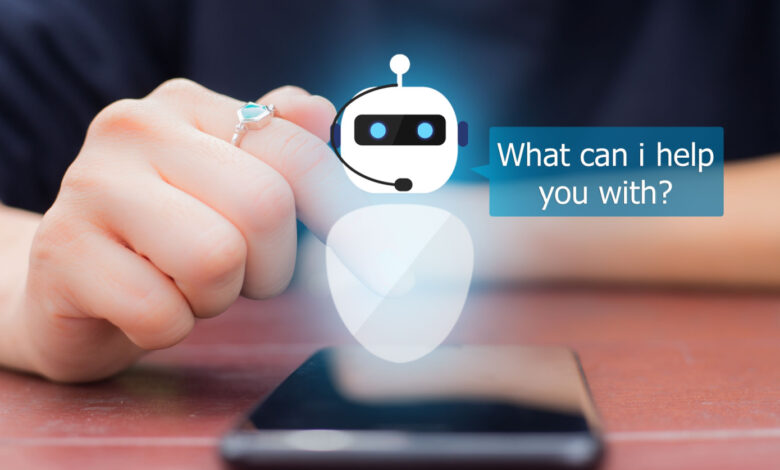
Chatbots used to be considered state-of-the-art, but they’ve become commonplace on most commercial websites. From being a competitive advantage to becoming necessary for businesses to connect with clients, chatbot technology continues to evolve.
Chatbots are more than a way to reduce costs associated with live customer support agents. If they’re designed well, they’re also a way to improve customer satisfaction
When chatbots frustrate customer experience
A bad chatbot can be hugely frustrating. My most recent chatbot interaction underscores how important conversational design is to an end user’s experience. I needed to make a change to a flight I had booked using my credit card reward points with a large bank. When I opened the chatbot interface I was presented with a long list of options. Instead of reading through the entire list, I typed, “I want to change my trip”. The bot responded with, “Sorry, I’m unable to understand”, and it gave me a link to the FAQ page.
I decided I needed to read through the list of commands it had presented initially, and I typed one of those “update a trip”. Again, the return was, “Sorry, I’m unable to understand”, so I clicked the link in the list of commands and again, I was met with, “Sorry, I’m unable to understand”, but this time asked if I wanted to start over.
I clicked “start over” and clicked my way through the menu to “update a trip”. The bot pulled up two flights I had scheduled, but it told me I needed to call a toll-free number. That message turned this brief interaction with the chatbot into a waste of time that I will avoid in the future by just calling the toll-free number.
After calling an agent and going through all the annoyingly normal back and forth about account ID, address, mother’s maiden name, etc., I managed to change my flight.
This interaction didn’t lead to my bank losing a customer or a terrible experience when I took my flight, so one could view this interaction as…meh. However, it did leave me with the impression that the chatbot on the bank’s rewards website is useless and that I should just call their toll-free number, a terrible result if you or your team implemented that chatbot.
What went wrong?
1. The chatbot wasn’t conversational. It couldn’t map my query (I want to change my trip) to its intent (update a trip).
2. It couldn’t context-switch at all. Once the bot told me it couldn’t understand, it couldn’t manage a corrected query or even a direct click on the prior menu item – this demonstrates a very rigid menu-driven chatbot.
3. When the chatbot couldn’t work with my flight, there was no option but to continue the chat with a live agent. A smooth handover of the information in the chat to a live agent would’ve meant that I wouldn’t have needed to “re-login” over the phone with an agent who was completely unaware of the call’s context.
These three shortcomings of the chatbot led to a poor interaction and a lack of trust in the chatbot’s ability to be helpful. There may have been impressive integrations with ticketing and reservation systems, but I’ll probably never see it because of this interaction.
Chatbots should enhance customer experience
Contrary to the above experience, I had an excellent interaction with another chatbot when I needed to check-in for a recent medical appointment. The chatbot was deployed through the medical provider’s mobile app. I received a notification from my phone that I could check-in on the app directly.
Clicking on the pop-up directed me to the chatbot, which told me my scheduled time and asked me to confirm it. After confirming, it asked me to complete my check-in process online, which involved providing some of my basic information and consent.
After completing check-in, the bot also gave me instructions on what to do before my visit, which was quite helpful. When I arrived in the office, I didn’t need to fill in any forms and could walk in when they called my name.
In this example, the chatbot helped me with my real-world experience instead of just directing me to a live agent or sending me to an FAQ.
So, why did this experience end so much better than my travel website experience?
1. The interaction with the bot was not just to help me conduct a conversation but also thought through end-to-end to help make my experience during check-in hassle-free.
2. Using the app on my phone meant I didn’t have to call a toll-free number or navigate to a separate website.
3. The chatbot allowed me to get the most out of my appointment by giving me additional information that helped me prepare for my visit.
The chatbot’s three strengths weren’t in cutting-edge AI or intricate integrations with other data sources – they were the result of a well-thought-out conversational design, which focused on the value the chatbot provided to the user.
Design chatbots to enhance customer experience
Chatbot developers need to give a lot of thought to what they want the customer experience to look like. Never look at a chatbot in isolation from existing communication channels or independent of the customer experience before and after the conversation.
A bad implementation of a chatbot will lead to most of the conversations being directed to a live customer service agent, providing limited value and no savings to the organization.
A worse implementation, where the chatbot can’t even communicate the conversation it had with the customer to the agent (and ends in the customer repeating everything to a live agent), leads to a frustrated customer who never uses it again.
When a chatbot implementation is thought through holistically, maximizing the ability of the chatbot to make the customer experience seamless, reducing the time and need for additional engagement, the chatbot truly achieves its purpose.
In the design stage, don’t limit the scope of your chatbot to what current channels of communication can achieve. Instead, look for new ways it can help enhance the end-to-end customer experience and make customers want to use the chatbot again.


